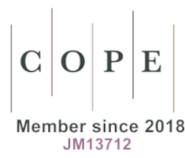Model of State Management of Petroleum Sector – Case of Norway
DOI:
https://doi.org/10.1515/ipcj-2017-0019Keywords:
Norway, oil and gas sector, managementAbstract
The aim of the article is to discuss the Norwegian Model of hydrocarbon management and its impact on building a just and equal society. Since 1972, the model has been based on the separation of policy, commercial, and regulatory functions. Within each area there is state-controlled institution with its own distinct role. This model of separation of duties is however combined with other unique features which cannot be easily copied by other counties. These include a long tradition and high level of democratic co-operation, intergovernmental checks and balances, socio-democratic traditions of strong public involvement, mature institutional capacity (mainly a competent bureaucracy) and highly developed model of co-operation between government, business and research institutions.
Downloads
References
Act 29 November 1996 No. 72 relating to petroleum activities. Web. 28 June 2016, http://www.ptil.no/getfile.php/Regelverket/Petroleumsloven_e.pdf
Google Scholar
Al-Kasim, F., Managing Petroleum Resources: The ‘Norwegian Model’ in a Broad Perspective, Oxford Institute for Energy Studies, Oxford 2006.
Google Scholar
Carrington, D., Norway confirms $900bn sovereign wealth fund’s major coal divestment, “The Guardian” (5 June 2015), June 5, 2015. Web. 28 June 2016, http://www.theguardian.com/environment/2015/jun/05/norways-pension-fund-to-divest-8bn-from-coal-a-new-analysis-shows
Google Scholar
Council on Ethics. Guidelines for observation and exclusion from the Government Pension Fund Global. Web. 28 June 2016, http://etikkradet.no/en/guidelines/
Google Scholar
Gassco. Web. 28 June 2016. https://www.gassco.no/en/about-gassco/gassled-eng/
Google Scholar
Gordon, R., Stenvoll, T., Statoil – a Study of Political Entrepreneurship, “The James Baker III Institute for Public Policy, Case Studies Series” (March, 2007). Web. 28 June 2016, http://bakerinstitute.org/media/files/page/9ffcb110/noc_statoil_gordon_stenvoll.pdf
Google Scholar
Holden, S., Avoiding the Resource Curse The Case Norway. University of Oslo, Oslo 2013. Web. 28 June 2016, http://folk.uio.no/sholden/wp/resource-cursenorway-13.pdf
Google Scholar
International Energy Agency. Key World Energy Statistics 2015. Web. 28 June 2016, https://findenergy.co.uk/key-world-energy-statistics-2015-pdf/
Google Scholar
Nelsen, B., Explaining Petroleum Policy in Britain and Norway, 1962–90. “Scandinavian Political Studies”, Bind 15 (New Series) (1992), pp. 307–27.
Google Scholar
Norges Bank, Investment Management. Funds Market Value, March 29, 2016. Web. 28 June 2016, https://www.nbim.no
Google Scholar
Norwegian Ministry of Petroleum and Energy. Meld. St. 28 (2010–2011) Report to the Storting (White Paper). An industry for the future – Norway’s petroleum activities. Oslo 2011.
Google Scholar
Norwegian Petroleum Directorate a. Oil and Gas Production. Web. 28 June 2016, http://www.norskpetroleum.no/en/production-and-exports/oil-and-gas-production/
Google Scholar
Norwegian Petroleum Directorate b. The Norwegian Petroleum Sector, Facts 2014. Web. 28 June 2016, http://www.npd.no/Global/Engelsk/3-Publications/Facts/Facts2014/Facts_2014_nett_.pdf
Google Scholar
Norwegian Petroleum Directorate c. The Petroleum Tax System. Web. 28 June 2016. http://www.norskpetroleum.no/en/economy/petroleum-tax/
Google Scholar
Norwegian Petroleum Directorate d. The State Organization of Petroleum Activities. Web. 28 June 2016, http://www.norskpetroleum.no/en/framework/state-organisation-of-petroleum-activites/
Google Scholar
Norwegian Petroleum Directorate e. Norway’s Petroleum History. Web. 28 June 2016. http://www.norskpetroleum.no/en/framework/norways-petroleum-history/
Google Scholar
Olsen, M. The future of national oil companies in Russia and how they may improve their global competitiveness, “Houston Journal of International Law”, 35.3 (2013), pp. 617–54.
Google Scholar
Thurber, M., et. al. Exporting the “Norwegian Model”: The Effect of Administrative Design on Oil Sector Performance, “Energy Policy” 39 (2011), pp. 5366–78.
Google Scholar
US Energy Information Agency. International Energy Statistics. Web. 28 June 2016, http://www.eia.gov/beta/international/rankings/#?prodact=53–1&cy=2014
Google Scholar
Downloads
Published
How to Cite
Issue
Section
License
Copyright (c) 2017 International Studies. Interdisciplinary Political and Cultural Journal

This work is licensed under a Creative Commons Attribution-NonCommercial-NoDerivatives 4.0 International License.

















